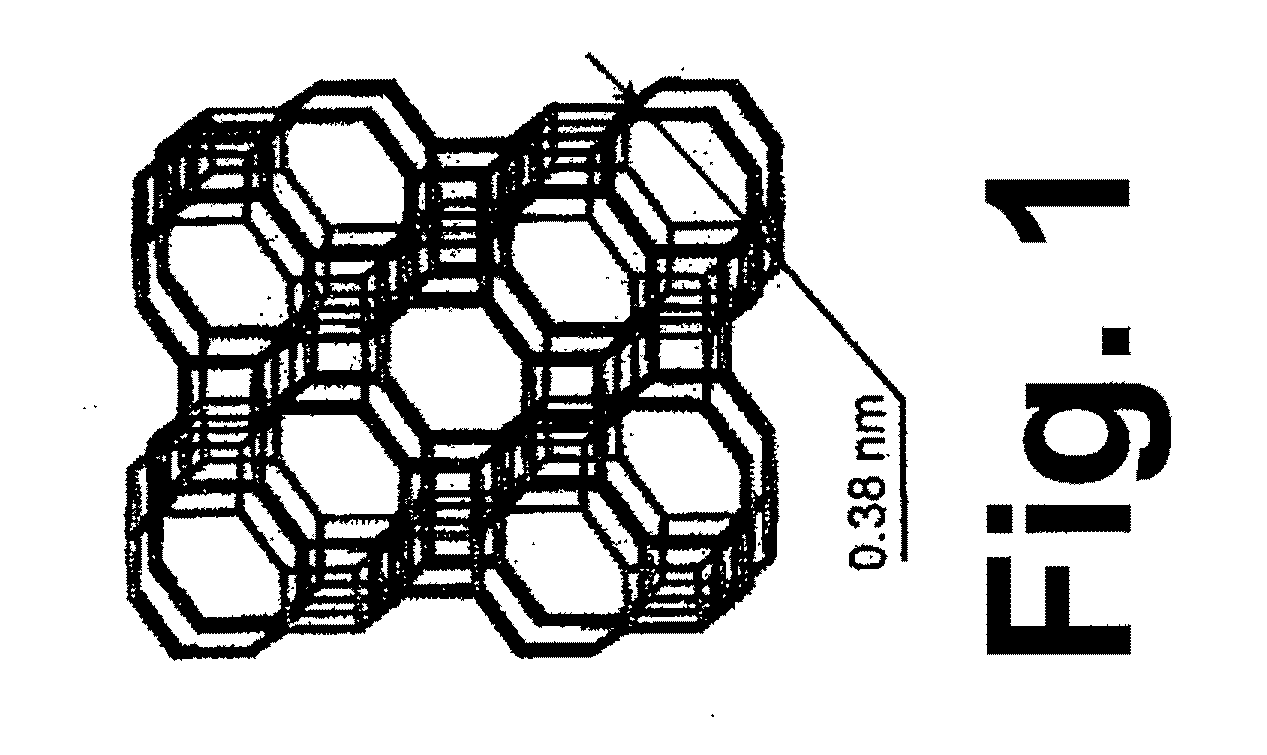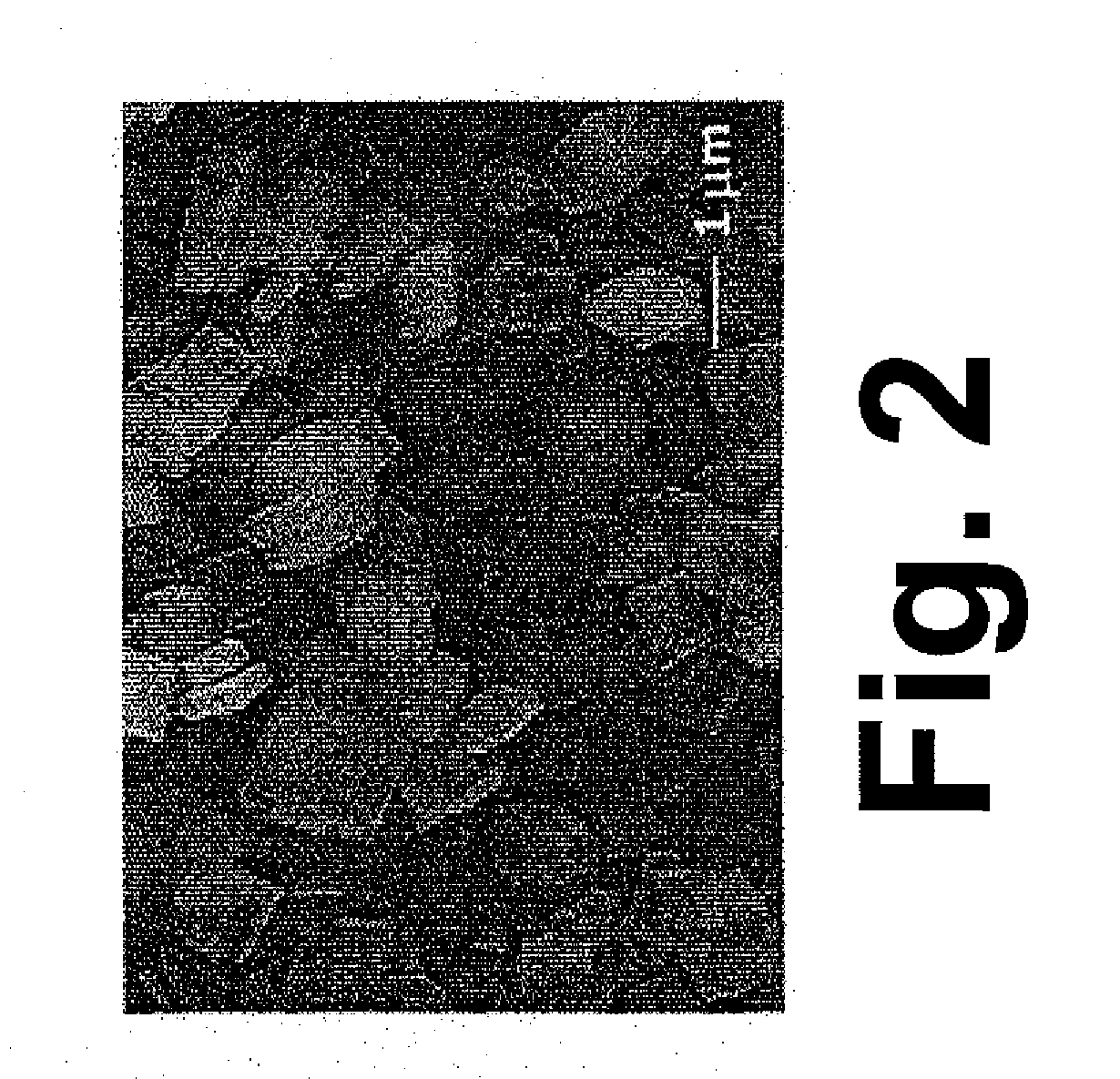Ultra-thin co2 selective zeolite membrane for co2 separation from post-combustion flue gas
a zeolite membrane and co2 separation technology, applied in the field of ultra-thin co2 selective zeolite membranes for co2 separation from post-combustion flue gas, can solve the problems of limited flue gas application, ineffective condensation of cosub>2 /sub>, and the cost of capturing cosub>2 /sub>using gas-separation membranes is only about 65% of the cost using a pressurized
- Summary
- Abstract
- Description
- Claims
- Application Information
AI Technical Summary
Benefits of technology
Problems solved by technology
Method used
Image
Examples
Embodiment Construction
[0029]SAPO-34 membranes, synthesized on porous α-Al2O3 supports by using multiple templates and reduced crystallization time in accordance with one embodiment of the method of this invention, show high CO2 permeability for separating CO2 / N2 mixtures up to 230° C. At a trans-membrane pressure drop of 138 kPa and an atmospheric pressure on the permeate side, one such membrane had a CO2 permeance of 1.2×10−6 mol / (m2·s·Pa) (=3,500 GPU) with a CO2 / N2 separation selectivity of 32 for a 50 / 50 feed at 22° C. At a feed pressure of 23 bar, the CO2 flux was as high as 75 kg / (m2·h). CO2 / N2 separations were investigated in part by using vacuum permeate pumping, whereby the membrane showed a CO2 permeance of 7.7×10−7 mol / (m2·s·Pa) and a CO2 permeate concentration of 93% for an equimolar feed at 22° C. For a 10% CO2 / 90% N2 feed, to reach a CO2 permeate concentration of 99%, only three steps were required at 22° C. and 4 steps required at 110° C.
[0030]The membranes of this invention are formed by c...
PUM
| Property | Measurement | Unit |
|---|---|---|
| pore size | aaaaa | aaaaa |
| size | aaaaa | aaaaa |
| thickness | aaaaa | aaaaa |
Abstract
Description
Claims
Application Information
 Login to View More
Login to View More - R&D
- Intellectual Property
- Life Sciences
- Materials
- Tech Scout
- Unparalleled Data Quality
- Higher Quality Content
- 60% Fewer Hallucinations
Browse by: Latest US Patents, China's latest patents, Technical Efficacy Thesaurus, Application Domain, Technology Topic, Popular Technical Reports.
© 2025 PatSnap. All rights reserved.Legal|Privacy policy|Modern Slavery Act Transparency Statement|Sitemap|About US| Contact US: help@patsnap.com



